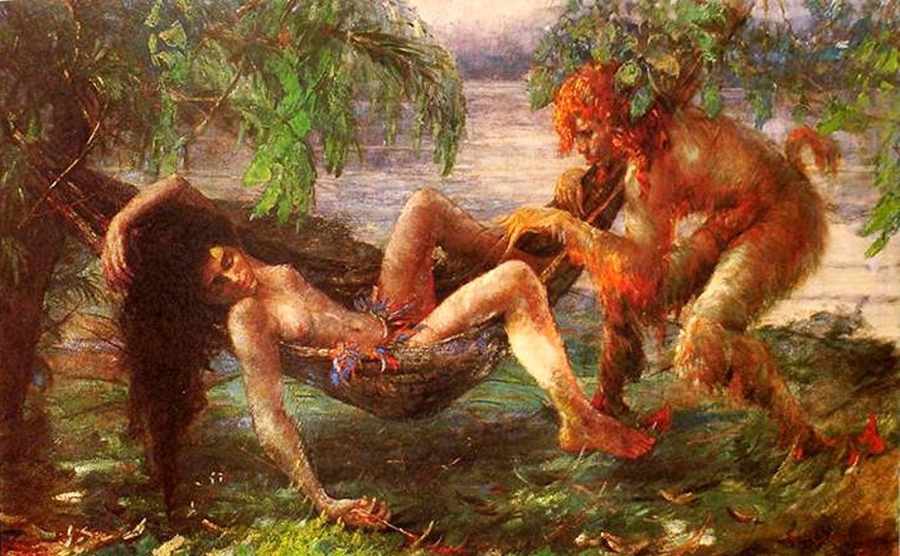The Curupira is a mythological creature of Brazilian folklore. This creature blends many features of West African and European fairies but was usually regarded as a demonic figure. The name comes from the Tupi language kuru’pir, meaning “covered in blisters”. According to the cultural legends, this creature has bright red/orange hair, and resembles a man or a dwarf, but its feet are turned backwards. Curupira lives in the forests of Brazil and uses its backward feet to create footprints that lead to its starting point, thus making hunters and travelers confused. Besides that, it can also create illusions and produce a sound that’s like a high pitched whistle, in order to scare and drive its victim to madness. It is common to portray a Curupira riding a collared peccary, much like another Brazilian creature called Caipora.
| Alias Curupira |
| Real Names/Alt Names Curupira |
| Characteristics Magician, Jungle Action, Magic Caster, Iron Age, Brazilian, Dwarf (folklore) |
| Creators/Key Contributors Unknown |
| First Appearance Brazilian mythology |
| First Publisher ○ |
| Appearance List “O Mito do Curupira” in Aurora Brasileira (October 1873), O selvagem Vol. II: Origens – costumes e Região Selvagem (1876), “Curupira” in Brazil the Amazons and the Coast (1879), “Contribuições para a ethnologia do valle do amazonas” in Archivos do Museu Nacional do Rio de Janeiro 6 (1885), “O Korupira” in Poranduba amazonense: ou, Kochiyma-uara porandub (1890) |
| Sample Read ○ |
| Description The Curupira is a mythological creature of Brazilian folklore. This creature blends many features of West African and European fairies but was usually regarded as a demonic figure. The name comes from the Tupi language kuru’pir, meaning “covered in blisters”. According to the cultural legends, this creature has bright red/orange hair, and resembles a man or a dwarf, but its feet are turned backwards. Curupira lives in the forests of Brazil and uses its backward feet to create footprints that lead to its starting point, thus making hunters and travelers confused. Besides that, it can also create illusions and produce a sound that’s like a high pitched whistle, in order to scare and drive its victim to madness. It is common to portray a Curupira riding a collared peccary, much like another Brazilian creature called Caipora. |
| Source Curupira – Wikipedia |

